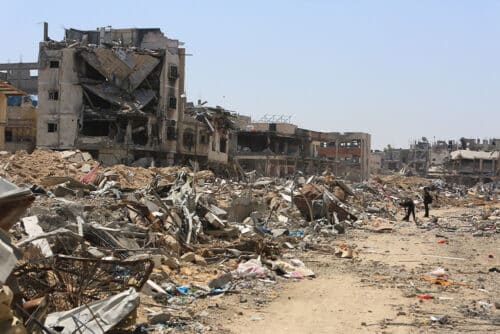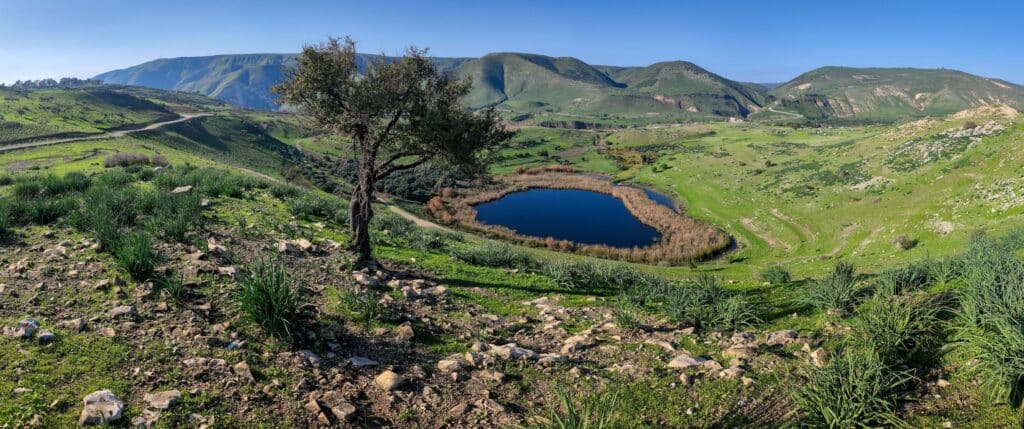
A mysterious stone circle believed to be the tomb of Og, King of the Giants; Hebrew warriors bravely confronting Roman legions and Syrian tanks; and some of the world’s oldest synagogues – these are part of the rich tapestry of the Golan Heights. This beautiful and historically significant region is far more than just a vital strategic asset.
Jewish settlement in the Golan has existed almost continuously since biblical times – spanning more than two millennia. Moses conquered it from Og, king of Bashan; the fighters of Gamla sacrificed their lives defending it against the Romans during the Great Revolt; and Avigdor Kahalani led a heroic tank battle crucial to Israel’s victory over Syria during the Yom Kippur War. The Golan is deeply woven into Jewish history, not merely a region of strategic and security value.
Here are some of the pivotal chapters in its story.
Kingdom of Israel and a Thriving Jewish Center
One of Israel’s most enigmatic sites lies in the Golan – Rujm el-Hiri (“Gilgal Refaim”), an enormous stone-circle structure from about 5,000 years ago, visible clearly only from the air. Although its purpose – perhaps a calendar or place of worship or burial – remains unclear, Jewish tradition identifies it as the tomb of the biblical giant Goliath or Og, king of Bashan.
Indeed, the Bible itself links Og, the last of the giants, to the Golan Heights. The Book of Numbers recounts how the Israelites, journeying to the Promised Land after the Exodus from Egypt, decisively defeated Og, his sons, and his people, subsequently allocating the land to the tribe of Manasseh. During the united kingdom of Israel, King Solomon appointed regional governors in the Golan, integrating it fully into his realm.
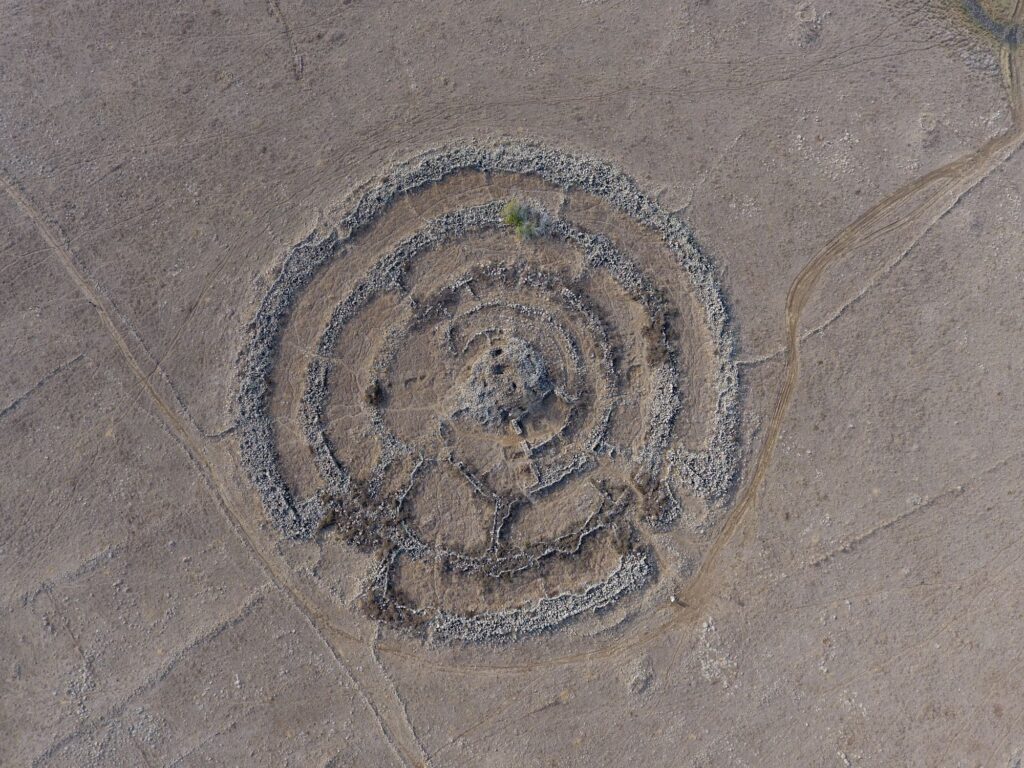
For centuries afterward, control of the Golan was fiercely contested. The Arameans controlled it for extended periods, their conflicts with Israel echoing in biblical narratives. Under King Ahab, Israelite forces decisively defeated the Arameans near the city of Aphek.
In Roman times, the Golan became a vibrant Jewish center, with numerous settlements and communities. Ancient synagogues uncovered at Gamla, Katzrin, Ein Nashut, and Ein Keshatot (Umm el-Kanatir) attest to a thriving Jewish life, prosperous economy, and flourishing culture.
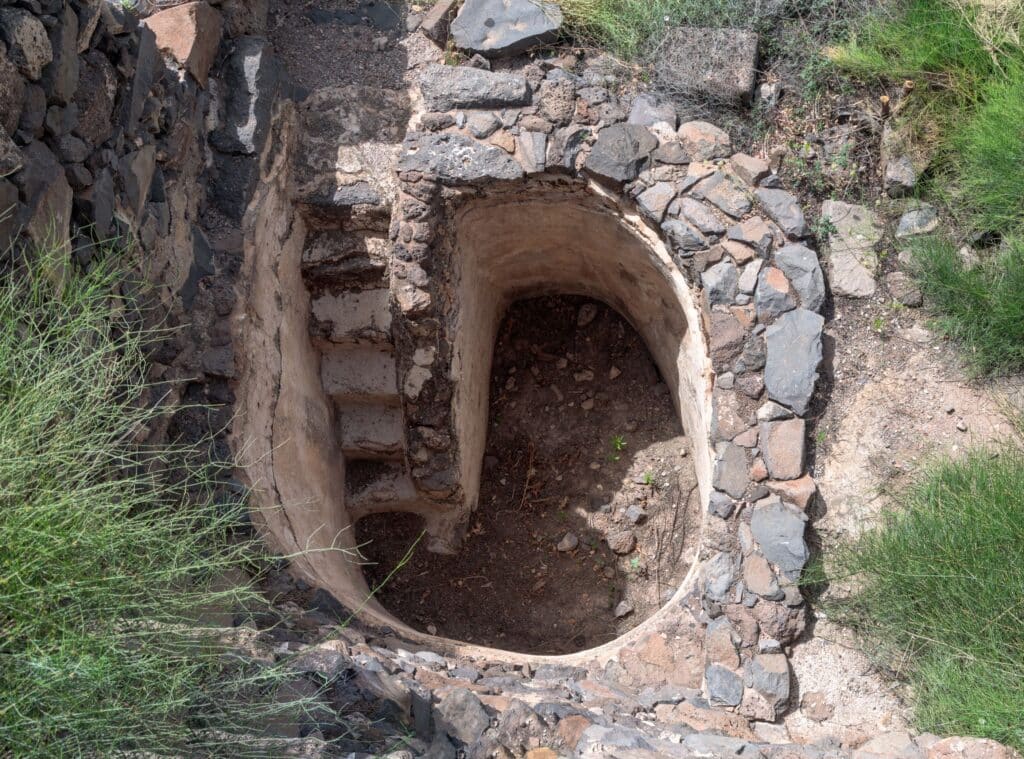
Gamla: A Symbol of Heroism and Sacrifice
During the Great Revolt against Rome (66–73 CE), the city of Gamla, perched on a camel-shaped mountain ridge (hence its name), became a symbol of Jewish resilience and courage.
The Mishnah mentions Gamla as a fortified city dating to Joshua ben Nun’s time. Its strategic location, accessible only via a narrow path, led Josephus Flavius – then commander of Galilee during the revolt and later a noted historian – to fortify Gamla as a rebel stronghold in the Golan.
Besieged by Roman legions commanded by the future emperor Vespasian, Gamla resisted heroically despite shortages of food and water, thanks to its natural defenses and sturdy walls. Eventually, the Romans breached the walls, yet in a dramatic reversal, Jewish defenders pushed them back, inflicting heavy casualties. However, the Romans reorganized and, in a subsequent assault, ultimately overcame the city.
According to Josephus, about 5,000 inhabitants chose death by leaping from the cliffs rather than fall into Roman hands. Today, visitors can explore Gamla’s impressive ruins, site of one of Jewish history’s greatest stories of heroism. The ancient synagogue discovered there is among the world’s earliest, tangible evidence of a rich and enduring Jewish presence.
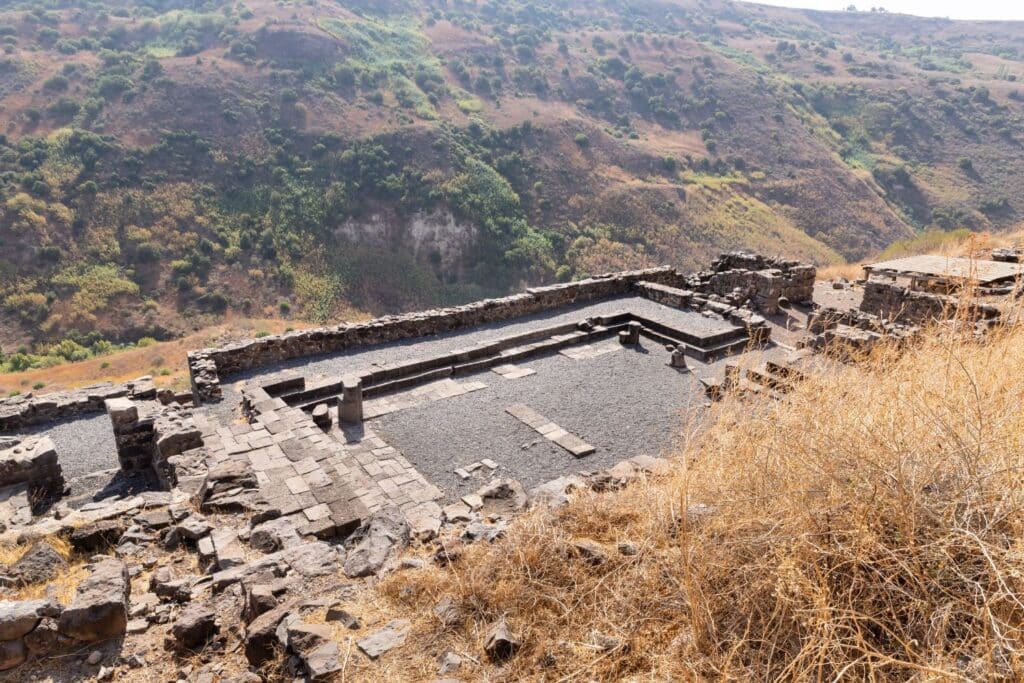
Six Days That Changed History
After Gamla’s fall, nearly two millennia passed before Jewish sovereignty returned. In 1948, Syria seized the Golan Heights, using it as a platform for aggression against Israel, regularly shelling communities in the Hula Valley and eastern Galilee.
In the 1967 Six-Day War, after years of Syrian provocations, the IDF launched a daring assault to reclaim the Golan. Syrian defenses – featuring fortified anti-tank and machine-gun positions amid steep terrain – posed immense challenges. Intense, fierce battles ensued; Golani Brigade famously stormed Tel Faher, among one of the war’s toughest confrontations. Simultaneously, armored divisions commanded by Generals Avraham Yoffe and Elad Peled penetrated Syrian defenses, rapidly advancing northward. On June 10, Quneitra fell, completing the Golan’s liberation.
Valley of Tears: The Battle That Saved Israel
The ultimate test came six years later, during the Yom Kippur War of 1973. On October 6, Syria launched a massive surprise assault on the Golan, simultaneously with Egypt’s attack in Sinai – a moment of existential peril for Israel.
Facing the Syrian onslaught stood a tiny Israeli defense force – around 170 tanks against approximately 1,200–1,400 Syrian tanks. IDF units under Northern Command’s General Yitzhak Hofi endured relentless waves of Syrian armored forces. Lieutenant Colonel Avigdor Kahalani led a small tank battalion against vastly superior numbers, battling extreme conditions: poor visibility, exhaustion, ammunition shortages, and overwhelming enemy assaults.
Despite severe numerical inferiority, Israeli tank crews skillfully utilized terrain advantages and tactical maneuvers, destroying hundreds of enemy tanks. Understanding that failure meant existential threat, they fought to their last shells, ultimately halting the Syrian advance. After initial defense, the IDF launched a successful counteroffensive, pushing Syrian forces back nearly 40 kilometers from Damascus. The Valley of Tears battle remains an iconic testament to the Golan’s critical strategic value.
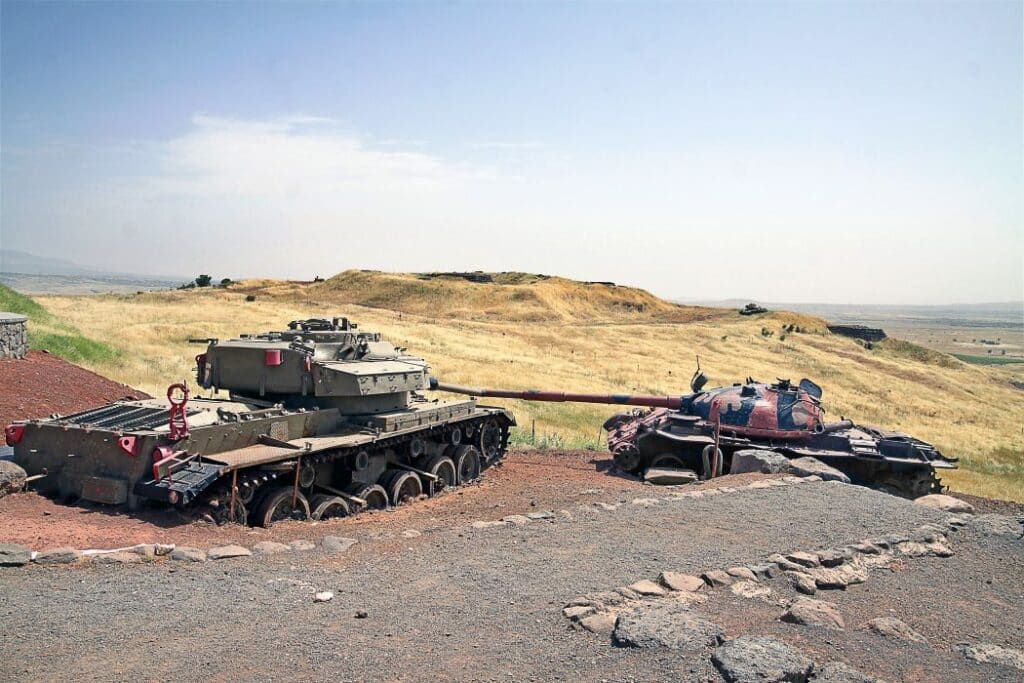
Sovereignty Affirmed: International Recognition
In 1981, Israel’s Knesset enacted the Golan Heights Law, applying Israeli sovereignty to the area, recognizing it not only as strategic asset but also as an integral to Israel’s heritage. In March 2019, U.S. President Donald Trump signed a historic proclamation officially recognizing Israeli sovereignty over the Golan – the first global power to do so. Acknowledging its strategic importance for Israel’s security and regional stability, the community of Ramat Trump was established in the Golan to honor his courageous support.
New Security Challenges After Assad’s Fall
Syria’s civil war, erupting in 2011, created new security challenges. Chaos allowed extremist groups, including ISIS and Iran-backed Hezbollah, to seek footholds near Israel’s border. Israel responded by providing humanitarian aid (“Operation Good Neighbor”) while executing military actions to prevent Iranian entrenchment and arms transfers to Hezbollah.
The fall of Assad’s regime in late 2024 renewed regional volatility, compelling Israel to intensify diplomatic and military activities to ensure border stability and thwart emerging threats.
Strategic and National Importance
Repeated battles underscore the Golan’s irreplaceable strategic significance – overlooking northern Israel, forming a natural defense barrier against Syria. Control of the Golan has consistently proven vital for safeguarding northern Israeli communities and national security, especially amid growing regional threats from Iran expansionism and other terror groups.
Thriving Israeli Settlement Today
Modern Israeli settlement began soon after 1967. Kibbutz Merom Golan was established first, followed by many communities, notably Katzrin. Since 1981, development accelerated. Today, about 53,000 residents live across 33 Israeli communities and four Druze villages (Majdal Shams, Buqata, Mas’ade, and Ein Qiniyye).
Under Israeli sovereignty, the Golan has blossomed agriculturally – producing renowned wines like Golan Heights Winery and Pelter Winery, international destinations for wine enthusiasts. Tourism thrives amid spectacular waterfalls, nature reserves, archaeological sites, and scenic trails.
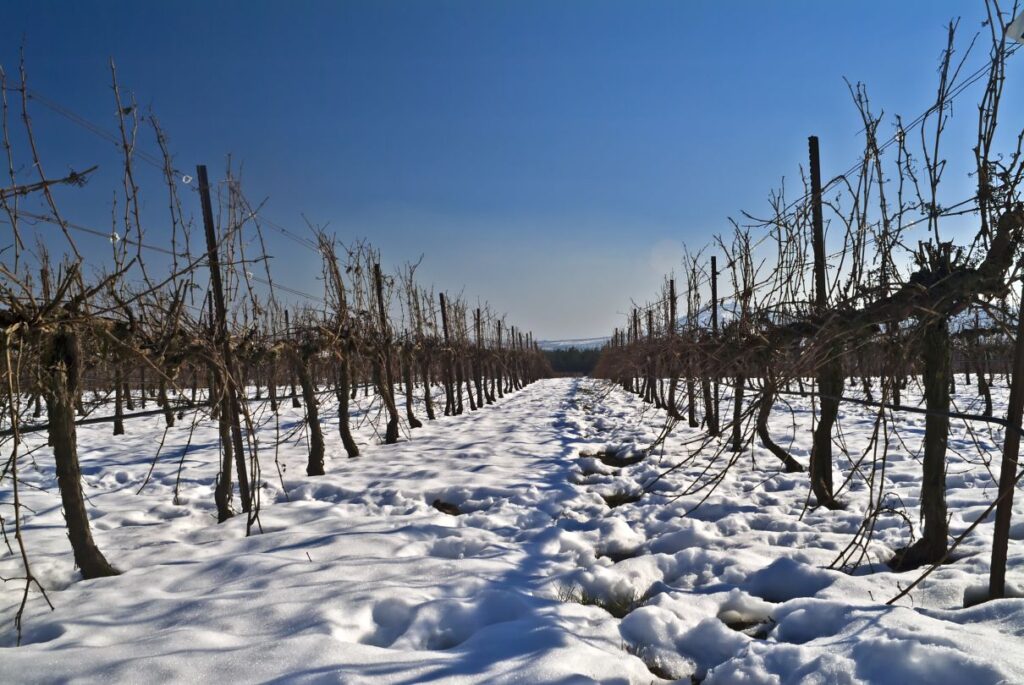
A Mosaic of Nature, Heritage, and Security
The Golan transcends mere strategic value. Beyond breathtaking landscapes, celebrated wineries, and remarkable tourist attractions, it symbolizes Jewish courage, determination, and historic roots. History teaches unequivocally that Israel lacks the luxury of relinquishing the Golan – not merely due to its security and strategic importance, but primarily due to our profound historical connection since our nation’s earliest days.
As Prime Minister Menachem Begin declared in the Knesset in 1981 when the Golan was annexed: “No serious person in Israel could deny that the Golan Heights has always been an integral part of the Land of Israel.”




